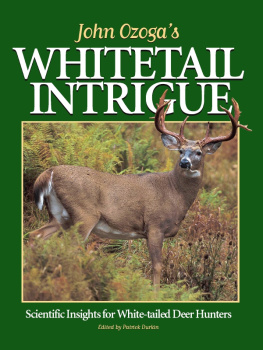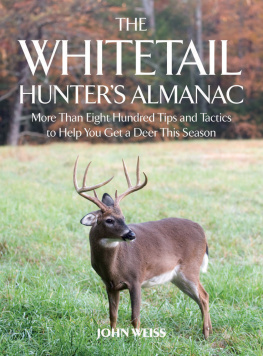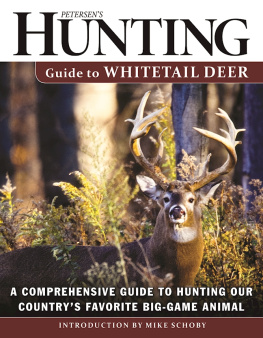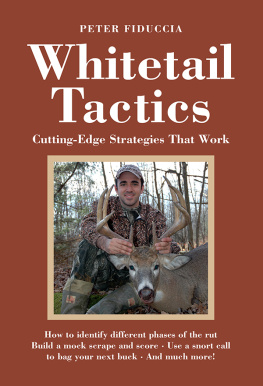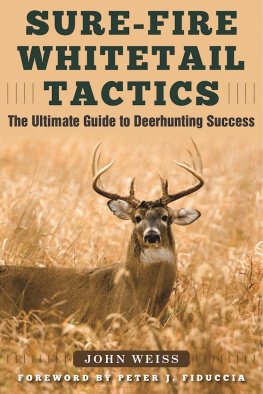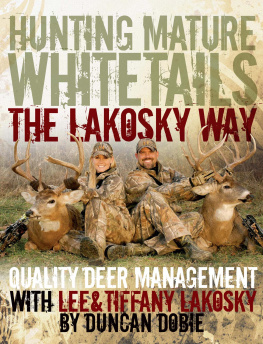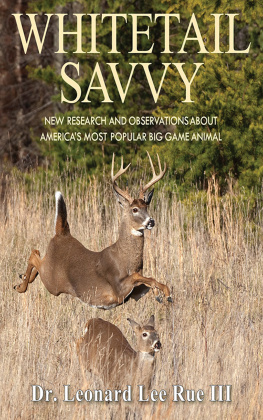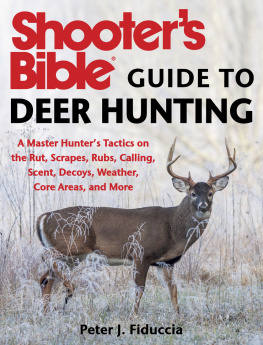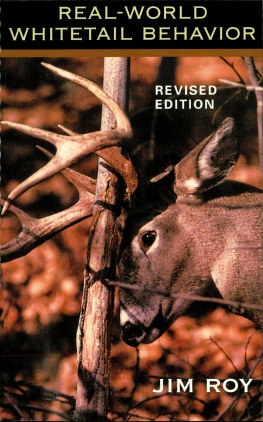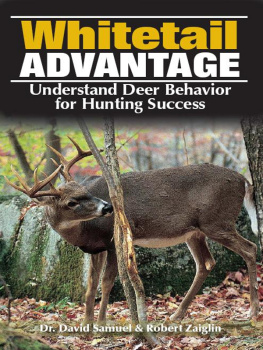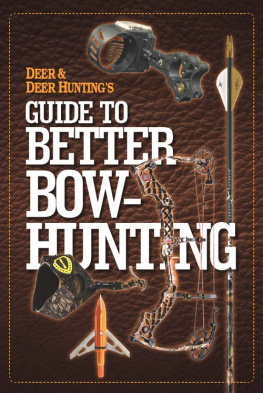Thank you for purchasing this Deer and Deer Hunting eBook.
Sign up for our newsletter and receive special offers, access to free content, and information on the latest new releases and must-have deer and deer hunting resources! Plus, receive a coupon code to use on your first purchase from ShopDeerHunting.com for signing up.
or visit us online to sign up at
http://deeranddeerhunting.com/ebook-promo
2000 by Krause Publications Inc.
All rights reserved. No portion of this publication may be reproduced or transmitted in any form or by any means, electronic or mechanical including photocopying, recording, or any information storage and retrieval systems, without permission in writing from the publisher, except by a reviewer who may quote brief passages in a critical article or review to be printed in a magazine or newspaper, or electronically transmitted on radio or television.
Book design by Allen West, Krause Publications.
Cover Photo Credits:
Front Cover: Charles J. Alsheimer
Back Cover: Len Rue Jr. (bottom), Mark Raycroft (top)
Published by

700 E. State St. Iola, WI 54990-0001
eISBN: 978-1-44022-454-6
Please call or write for our free catalog of publications. Our toll-free number to place an order or to obtain a free catalog is (800) 258-0929. Please use our regular business telephone (715) 445-2214 for editorial comment and further information.
Library of Congress Catalog Number: 99-68133
ISBN: 0-87341-881-6
Printed in the United States of America
To my very special Janice:
this familys guiding light.
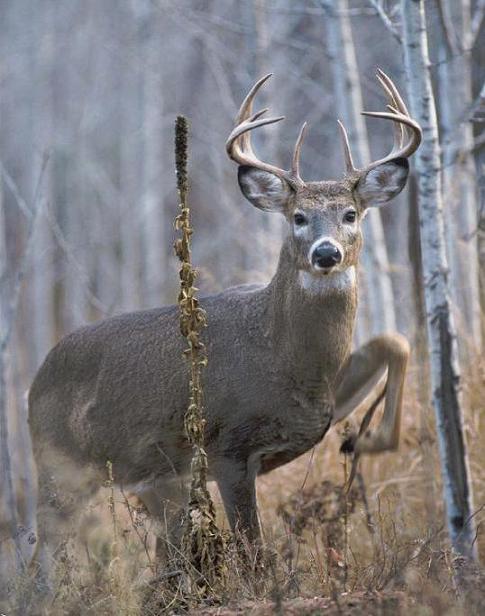
BillKinney
CONTENTS
FOREWORD
O ne of my most satisfying moments as editor of Deer & Deer Hunting was the day in November 1993 when John Ozoga agreed to write Deer Research as a regular column in our magazine.
Even though his articles appeared at times in the magazine in the late 1980s, his work was absent from D&DH in the early 1990s because someone in the Michigan Department of Natural Resources believed outside writing constituted a conflict of interest for agency personnel.
John explained his situation to me shortly after the magazine hired me in January 1991. Even though John couldnt write for us, I often called him to discuss various aspects of deer behavior, or to compare notes on deer politics in whitetail country. In effect, John became one of my technical advisers as I edited the magazine and spliced his insights into the text of other peoples articles.
Nearly every time we spoke, I reminded John there would always be room for his writings in D&DH; all he had to do was give the word. As John inched closer toward his pending retirement in early 1994, we began talking about the type of research findings he would like to share with the magazines readers.
Still, it wasnt until I assigned John his first article and manuscript deadline that I allowed myself to celebrate the magazines coup. Finally, after four years of courting this venerable researcher and talented writer, we actually had an agreement! When I hung up the phone after making that verbal pact, I pumped a fist and then typed John J. Ozoga, Research Editor into the magazines masthead.
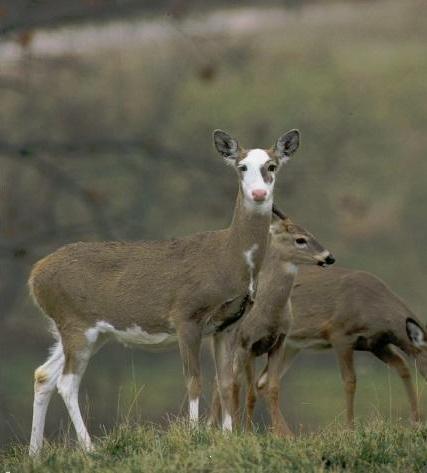
BillLea
Never has John disappointed me since that day. Though retired from his career as a research biologist, he has continued to stay atop deer research. Its obvious from our conversations and the articles he submits that he still pores over scientific papers on whitetails, always adding his own insights into what his fellow researchers across North America report.
Before long, John became a staple of the D&DH editorial diet. Then, a couple of years ago, while editing D&DHs 20th anniversary book, The DeerHunters, I struggled to decide which of Johns articles to include. I eventually chose Should You Doctor Scrapes?, which is also on Page 72 of this book. That article was first published in the November 1994 issue of D&DH. In the meantime, however, I had mentioned my dilemma to Charlie Alsheimer, the magazines Northern field editor. Charlie suggested the obvious answer: You really should do a full-color book with all of Johns Deer & Deer Hunting articles. That idea came to fruition in 1999 when we started compiling and editing the book that follows.
So, here we go.
One of the many qualities that always impresses our readers is Johns objective yet heartfelt fascination with whitetails. Despite more than 30 years of working with hundreds of individual deer, John is ever the scientist. Never does he let himself fall victim to naming deer or referring to them by anything other than an ID number. These are wild animals after all, and his respect for them runs so deep that he refuses to domesticate them in any way.
Johns studied detachment allows him to explore the whitetails incredible ability to adjust and adapt to its ever-changing world and habitat. He refuses to romanticize the creature or offer off-hand explanations for various deer behaviors or adaptations. He more likely will list several possibilities, and note that even with exhaustive research, the ways of whitetails will always contain just enough mystery to defy easy explanation.
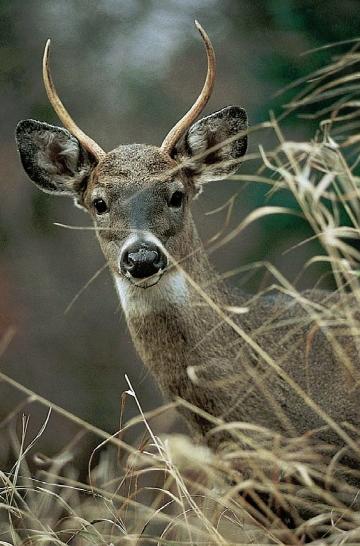
Charles J.Alsheimer
Despite his no-nonsense approach to whitetail research, theres another side to John thats not always apparent in his writing. While he simply wont draw conclusions about deer without the requisite research and academic peer review, he isnt judgmental when he hears laymans interpretations. If anything, he encourages the observations and explanations offered by the regular deer hunter. He might say some of them are a bit cheeky with their opinions, but he still offers encouragement and often agrees they might be onto something.
Its Johns ability to connect with deer hunters that makes his writings so accessible to deer huntings masses. While other researchers might have just as many insights to offer, few are his equal in presenting information in clear, concise, easily understood terms. Thats why I always consider John J. Ozoga to be the deer hunters biologist. The only thing that might equal his passion for the whitetail is his respect for the deer hunter.
Lets hope this mutual admiration continues for many deer seasons to come.
Patrick Durkin
Editor, Deer & Deer Hunting
February 2000
INTRODUCTION
A sk any writer, and theyll say one of their deepest fears is working with an editor who doesnt have a good feel for the subject matter or an appreciation for the way the writer presents it.

